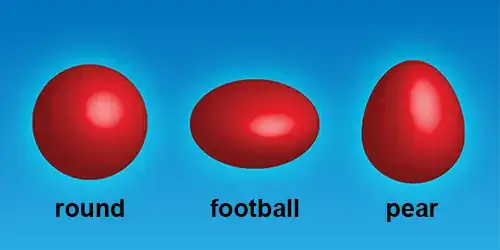I was reading the Wikipedia page on nuclear density when I came upon a problem. (I haven't yet been introduced to nuclear physics.)
What form does the nucleus have? Is it spherical? How is it possible for the nucleus to be spherical? Looking at the nucleus in the Wikipedia image below, I can see that it is not exactly spherical and that there are empty spaces between the nucleons.
Now if we assume nucleus to be spherical, the $\text{Volume} \ V=\frac{4}{3}πr^3=\frac{4}{3}π(r_0A^ {1/3})^3 =\frac{4}{3}πr_0^3A$.
Now the $\text{Density of nucleus} \ \rho = \frac{\text{Mass of nucleus}}{\text{Volume of nucleus}}= \frac {A}{\frac {4}{3}πr_0^3A}={\frac {3}{4\pi (1.25\ \mathrm {fm} )^{3}}}=0.122\ (\mathrm {fm} )^{-3}$. Therefore, the density for any typical nucleus, in terms of mass number, is thus constant, not dependent on $A$ or $r$, averaging about $2.3×10^{17} kg/m^3$. However, this again contrasts with $r=A^{1/3}r_{0}$.



